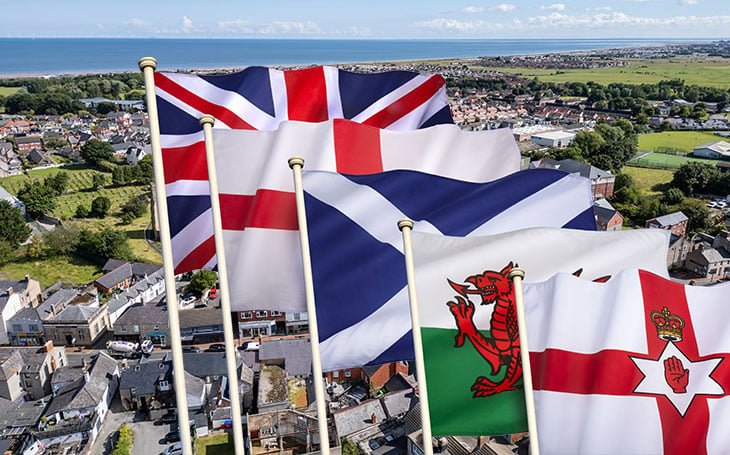
Latest figures from each country show that property prices remain fairly steady across the UK and, apart from in Northern Ireland and Scotland. Both are still playing catch-up from the Credit Crunch. which enables their annual growth to exceed the long term average – for now.

Northern Ireland housing market
“House price inflation is highest in Northern Ireland (+7.4%).”
“Northern Ireland continues to lead the UK for annual house price growth, with average property values up +8.1% over the past year. However, this marks a slight slowdown from +9.3% last month. The typical home now costs £217,082.”
Scottish housing market
“Scotland’s housing market continues to show resilience in the face of wider economic uncertainty. While average house prices dipped slightly in July – down £1,400 to £229,500 – this remains broadly in line with levels seen earlier in the year. Annual growth of 1.8% may appear modest, but it still outpaces in England and Wales, highlighting Scotland’s relative strength. Encouragingly, nearly two thirds of local authorities have recorded new price peaks at some point in 2025, with four reaching fresh highs in July alone.”
“Scotland saw the next strongest annual increase with prices rising +4.9% in August to an average of £215,594.”
Welsh housing market
“Average rents increased to £807 (7.9%) in Wales.”
“In Wales, property values rose +1.6% year-on-year, though the pace of growth has eased in recent months. The average home now costs £227,786.”
A stable market still includes regional variations
According to Land Registry data, the UK’s average annual increase in property prices is +3.3%. However, this average hides big regional differences: prices range from just +0.8% in some areas to a strong +7.8% rise in the North West.
Interestingly, only Yorkshire and The Humber recorded the UK average growth of 3.3%, while the West Midlands (3.5%) and the East of England (3.7%) performed slightly better. This shows why headlines claiming “UK house prices rise by 3.3%” are totally misleading.
This is important as these announcements can result in buyers and sellers making poor decisions if they rely on national averages rather than local data. That’s why it’s vital for estate agents – and even conveyancing lawyers – to explain what’s happening in their local market.
For example, this month’s indices highlight very different stories: Rightmove reports London asking prices averaging £666,983, down 1.6%, while Land Registry data shows a 7.8% increase in the North East.
Both can be correct, because they measure the market in different ways and at different times of the sales process. Rightmove reflects asking prices in the past month, Nationwide and Zoopla capture agreed sales a month or two later, and Land Registry data lags six to eight months behind, recording completed transactions.
![]()
Overall, summer 2025 has brought slight price falls in more regions than earlier in the year. But the positive news is that the market remains stable. We’re still on track to sell around 1.2 million homes this year – the long-term average – despite Bank Base Rates sitting at 4%.
If inflation falls, rates could drop to 3.5% or even 3% within the next 6–12 months, strengthening what is already a solid property market and paving the way for further improvement in 2026.
 This steady market is explained well by Zoopla who have also added in data about the average time it takes for a property to go ‘under offer’:
This steady market is explained well by Zoopla who have also added in data about the average time it takes for a property to go ‘under offer’:
“In Northern regions, affordability and lower supply levels are supporting stronger demand, which has resulted in faster sales. Homes in the North West and North East are going under offer in just 27 days on average, 23% faster than the national average of 35 days. This is helping fuel house price inflation in these areas, which is sitting at 2.7% and 2.1% respectively.
“In southern regions, where both supply of homes and affordability pressures remain greater, the average time to sell has stretched to 39 days. This is 11% longer than the national average. As a result of this, house price growth is sitting as low as 0.3% in the South East and South West.”
Commentary on the regional performance by indices
“Across England, there remains a clear North/South divide. The North East, North West, and Yorkshire & the Humber all recorded annual growth above +4%, making them the fastest-rising regions.
“By contrast, the South West saw prices fall -0.8% over the past year, the first UK nation or region to record an annual decline since Eastern England in July 2024 (-0.2%). London continues to see modest growth, with prices up +0.8% year-on-year. It remains the most expensive part of the UK, with an average property value of £541,615.”

